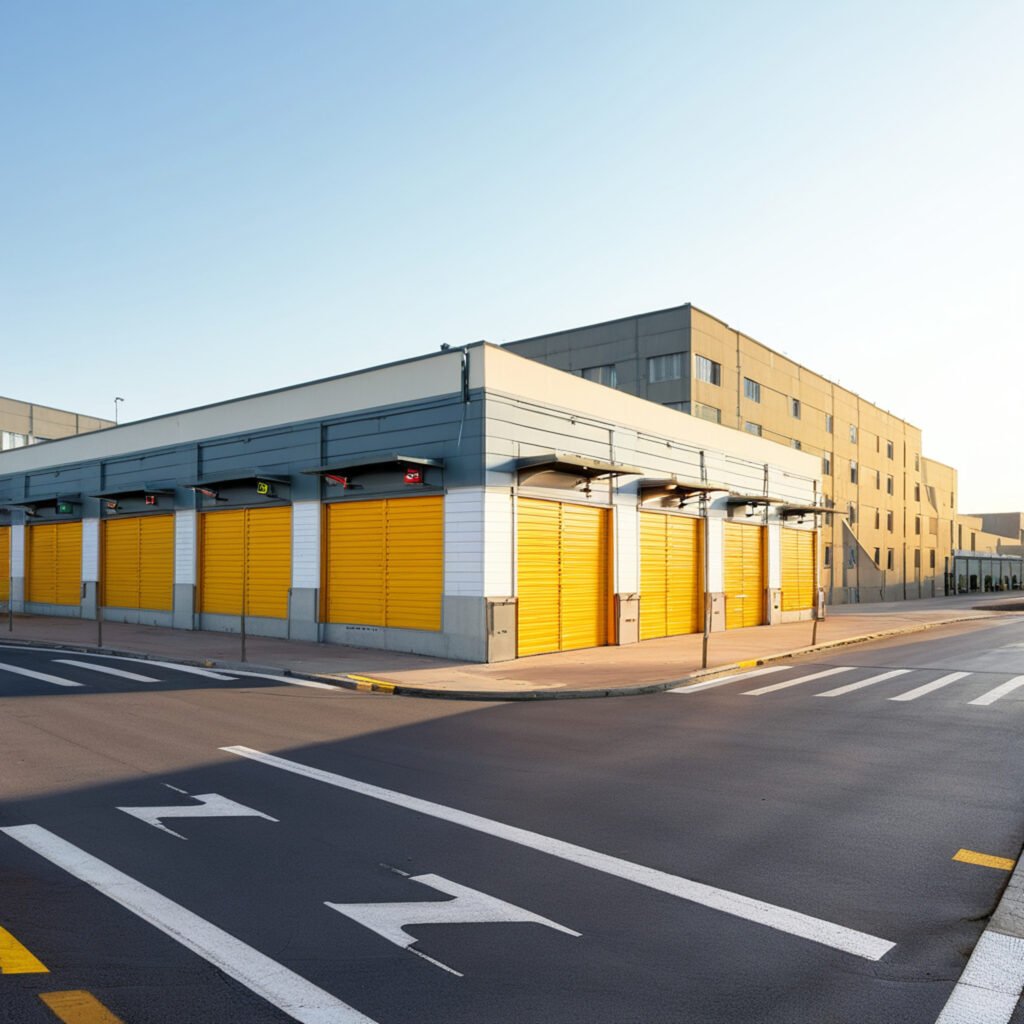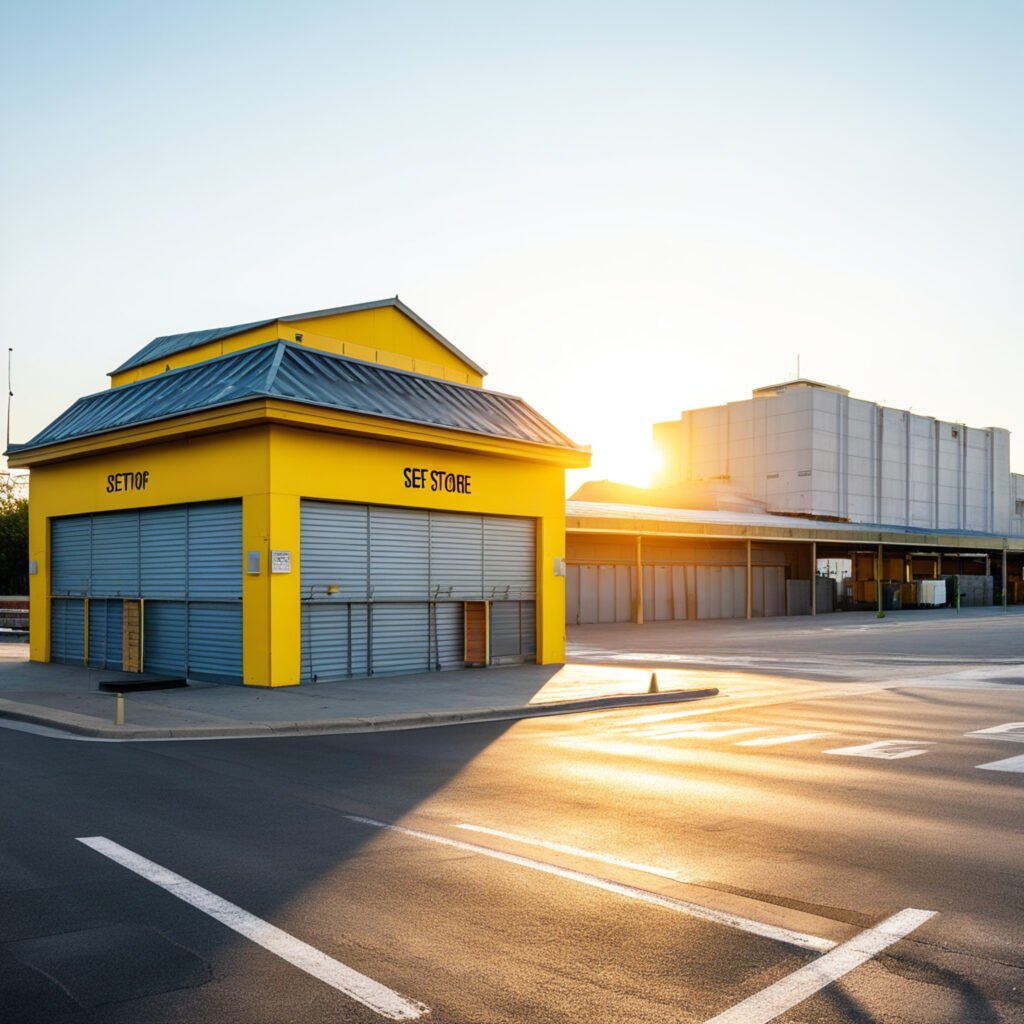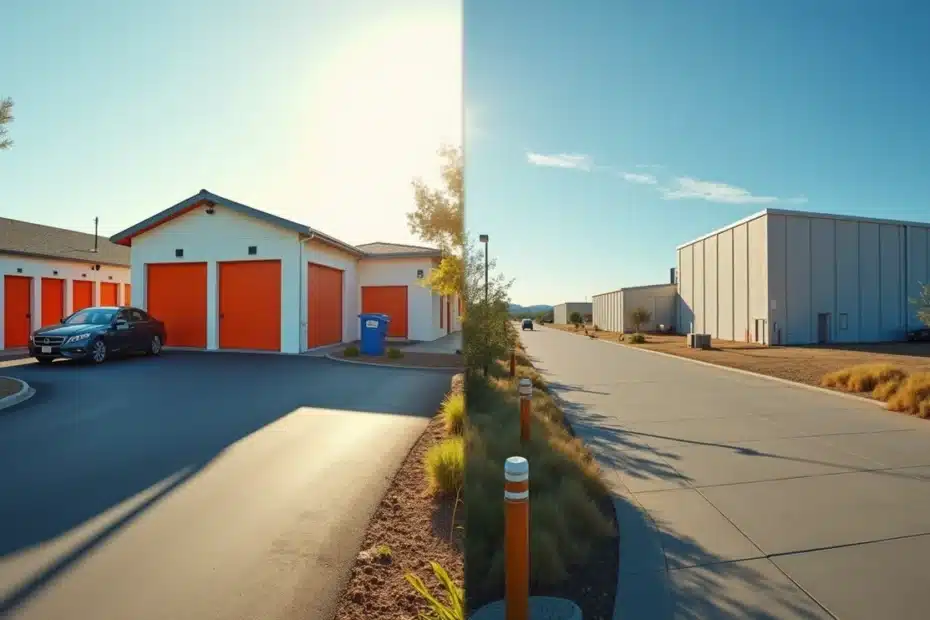Most people look at size and price while choosing a storage facility location, but they miss what really matters. The self-storage industry has grown significantly over the last several years, yet many customers overlook a vital factor that shapes their storage experience.
Our experience shows that picking the right storage unit involves more than just space. You need to pick a storage unit that keeps your belongings safe, maintains their condition, and stays accessible whenever you want them. Your facility’s location determines its success through better access, visibility, and customer interest. My search for nearby storage facilities taught me that easy access matters more than extra space. This holds whether you compare pods storage facility locations, iron mountain storage facility locations, or check out options like the Aliso Canyon storage facility location.
This piece will show why location should be your top priority. You’ll learn what makes a well-situated facility stand out and how to avoid focusing too much on size instead of access.
Why Location Matters More Than Size
Storage solutions aren’t just about square footage. The value of your storage facility depends more on its physical location than its size.
Proximity to your home or business
Storage units near your home or work give you the most important advantages that matter more than extra space. Small businesses need speed and convenience to succeed. A storage facility right around the corner lets you grab or stock items quickly. This matters a lot for e-commerce retailers who deal with high inventory turnover.
Research shows 30% of storage customers find facilities just by driving past them. Most customers pick places that are easy to reach rather than those hidden away. This makes sense – a storage facility closer to your base fits better into your daily routine.
Effect on time and fuel costs
Monthly rental fees tell only part of the financial story. Time costs money, especially for small businesses. Long trips to far-off storage units drain resources. You cut down transportation expenses and fuel costs by picking a nearby storage facility.
On top of that, experts say location affects storage costs more than any other factor. Each area’s real estate prices, worker wages, living costs, and taxes shape what you pay. Storage units away from city centers often cost less, but you need to weigh these savings against your travel expenses.
Convenience for frequent access
Easy access becomes crucial when you need your stored items often. A nearby storage unit helps you adapt to changing needs quickly. Your team can focus on important tasks instead of wasting time on logistics when supplies stay within reach.
Customer reviews always put location first: “The Cupertino Public Storage facility on Valley Green Drive is excellent! It is clean, modern, managed well, and the quickest way to get in and out with its proximity to Sunnyvale, Saratoga/DeAnza, 280, and 85. This feedback shows how a good location makes life easier.
Think about how often you’ll visit your unit. Regular access needs should make you choose a closer location over a few extra square feet you might never use.
Key Location Features to Look For

Your next critical step comes after deciding that location matters more than size – you need to identify specific facility features. Three key factors will shape your storage experience, making it either positive or problematic.
Safe neighborhood and low crime rate
A safe location should be your top priority while choosing storage space. Your belongings get better protection in areas with lower crime rates. To name just one example, some San Francisco neighborhoods stand out for safety – Outer Sunset ranks safer than 97% of San Francisco neighborhoods, and Noe Valley tops 91%.
Look up neighborhood safety stats before you commit. Storage facilities in safer areas proudly showcase their security features, including 24/7 surveillance, individual unit alarms, and controlled access. Notwithstanding that, it’s worth mentioning that a safe location adds protection that even the best security systems can’t match.
Visibility from main roads
People find storage facilities by driving past them 30% of the time. So, highly visible facilities tend to invest more in maintenance and security. Storage units you can easily spot from main roads bring practical benefits:
- Navigation becomes easier during visits
- Security monitoring and lighting improve
- Regular maintenance happens more often
Accessibility during business hours or 24/7
Knowing how to access your belongings matters just as much as security. Access hours vary between facilities – some let you in 24/7, while others limit hours from 6 AM to 10 PM or 6 AM to 11 PM.
24/7 access brings substantial advantages:
- You can get items during emergencies
- Business needs outside regular hours become easier
- Your personal schedule becomes more flexible
Unlimited access proves valuable, especially when you have non-traditional work hours or run a business. Industry sources show customers might pay extra for 24-hour access – a 10’x10′ unit costs about $98.70 monthly compared to standard-hours units. This premium often makes sense given the added convenience.
When Size Becomes Secondary
Storage customers often focus too much on unit size without realizing how location can quickly reduce these size benefits. You need to understand this relationship to find the best storage solutions.
Why bigger isn’t always better
Extra-large units can drain your wallet. The logic makes sense—bigger units cost more money, and picking one larger than you need wastes money on space. Research shows that 16% of American renters pick 10’x10′ units when they could do with smaller ones. These standard units cost about $2,000 per year according to Consumer Reports, and the price jumps to $3,700 in New York City.
How a poor location can cancel out size benefits?
A spacious unit becomes less practical if you can’t reach it easily. Units located 30-45 minutes away add travel time and gas costs that eat up any savings from lower rent. Limited access hours create problems, too—some facilities only let you in during business hours or charge extra for 24/7 access.
Examples of inefficient large units
Here are some real-life examples of inefficient storage:
- Large units where you can’t reach your items because of poor organization
- Businesses are paying warehouse rates when storage units would be cheaper
- Climate-controlled spaces that cost 20-50% more when regular units would work just fine
- Units that force you to fight through heavy traffic, making size benefits pointless due to access issues
The best solution combines the right size with a good location. You should prioritize easy access to items you keep taking them while factoring in both travel costs and monthly rental fees.
How to Choose the Right Storage Facility Location

The right storage facility needs careful planning and a thorough review. Here’s how you can find the perfect spot that fits your needs.
Use tools to find a storage facility near my location
The hunt for nearby storage units has become easier with online search platforms. SpareFoot lets you search by state, city, or ZIP code to find the closest options. These services show you available facilities, reviews, and pricing in your area. The digital tools highlight special promotions and discounts to help you get better rates.
Compare the pods storage facility locations and others
PODS gives you flexible storage options with locations throughout North America. Their network has over 240 secure storage centers, making them available in many regions. PODS stands out from regular units by bringing containers right to your property and moving them between locations when you need. The facilities offer month-to-month rentals, so you won’t need long-term commitments.
Visit and assess accessibility in person
A personal visit remains the best way to review a facility firsthand. You can check the cleanliness, security measures, and overall maintenance during your visit. Check if their access hours match your schedule—some let you enter 24/7 while others have set hours. The ease of getting to and around the facility will affect how happy you’ll be with your storage choice.
Conclusion
Storage facility location matters more than size in real-world situations. Many people rush to get the biggest unit they can afford, but this strategy wastes money and creates hassle. Smart storage seekers focus on convenience, safety, and accessibility.
A facility near your home or business saves time and reduces travel costs. Quick access becomes significant to businesses that need regular inventory checks or to retrieve seasonal items. A smaller, well-located unit provides more value than a larger one far away.
Safety should shape your decision. Research on neighborhood crime rates gives peace of mind that security systems alone can’t provide. Facilities on main roads tend to maintain higher standards and make navigation easier during visits.
The right mix of size and location stems from your specific needs. Proximity becomes vital if you need weekly access to your unit. A longer drive might make sense if you plan minimal visits to store items long-term, especially with better rates or amenities.
Online tools help compare options in your area, but visiting facilities in person is essential. The location’s layout, access testing, and security evaluation will guide you to the best choice.
Storage continues to expand because people need extra space. Making the most of that space means looking beyond just square footage. Next time you need storage, don’t focus only on unit size. You’ll thank yourself later when getting items becomes a quick task rather than an unwanted experience across town.

